Logitech G Yeti GX
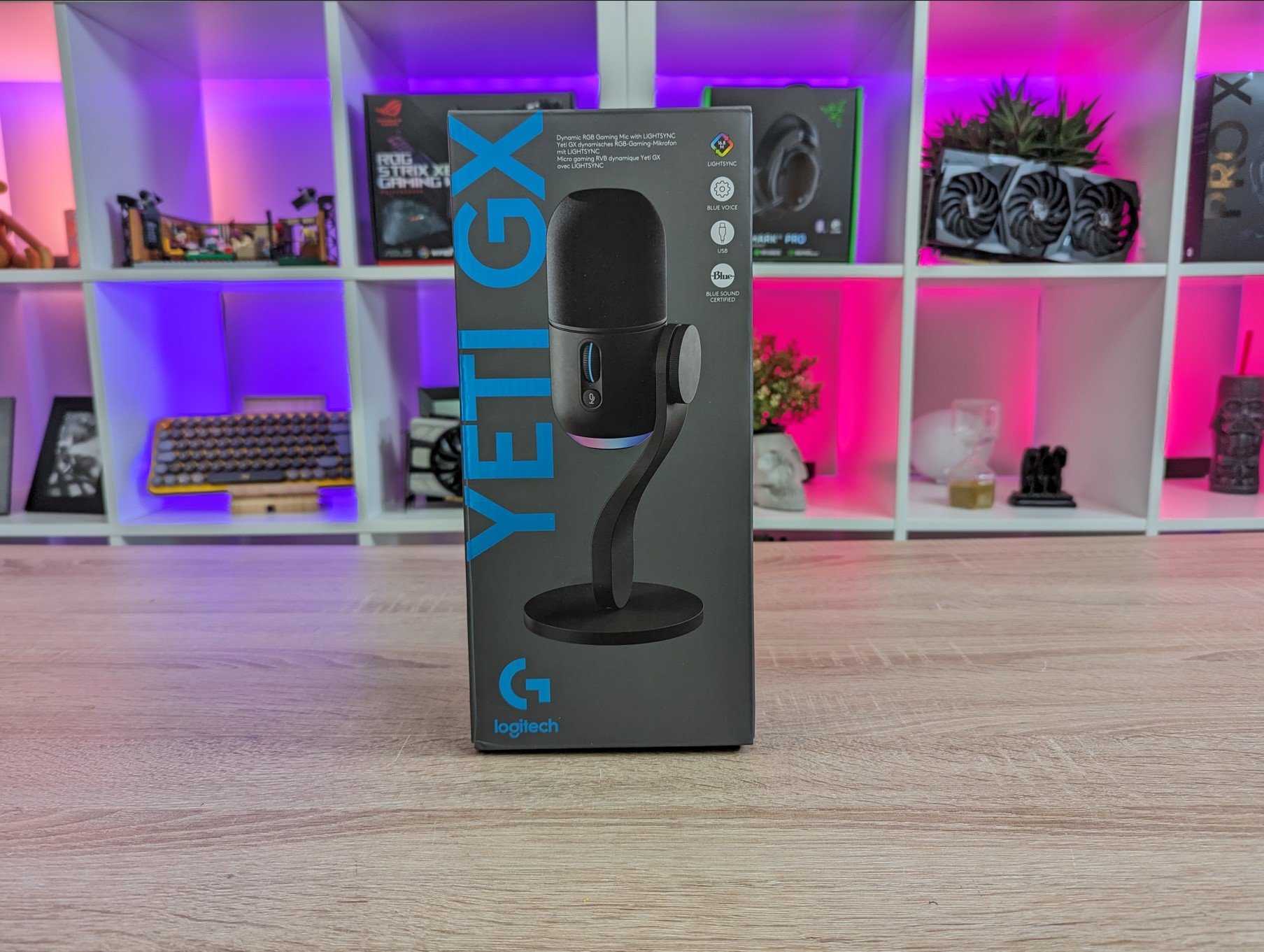
Specifications
- DIMENSIONS
- Weight: 616 g
- Height: 170 mm
- Width: 100 mm
- Depth: 100 mm
- TECHNICAL SPECIFICATIONS
- Type: Dynamic
- Audio Quality: 24bit / 96KHz
- Polar Pattern: Supercardioid
- Frequency Response: 50Hz-18KHz
- Connector: USB-C to USB-A
- Dynamic Range: 95 dB
- Signal to Noise Ratio: 78 dB
- Lighting: Dual zone RGB with LIGHTSYNC
- Mounting: Included stand or any boom arm (required adapter included)
A tour around the Logitech G Yeti GX
Logitech aims with the Yeti GX for the streaming market and with its subdued and stylish design, with a bit of RGB spic,e, the Yeti GX will immediately fit nicely into a streaming setup.
The materials are matt black plastic, which has a nice finish all around. It is most similar to aluminium, but is quite a bit lighter. The materials feel solid and finished, and the whole setup gives a sense of quality despite being plastic.
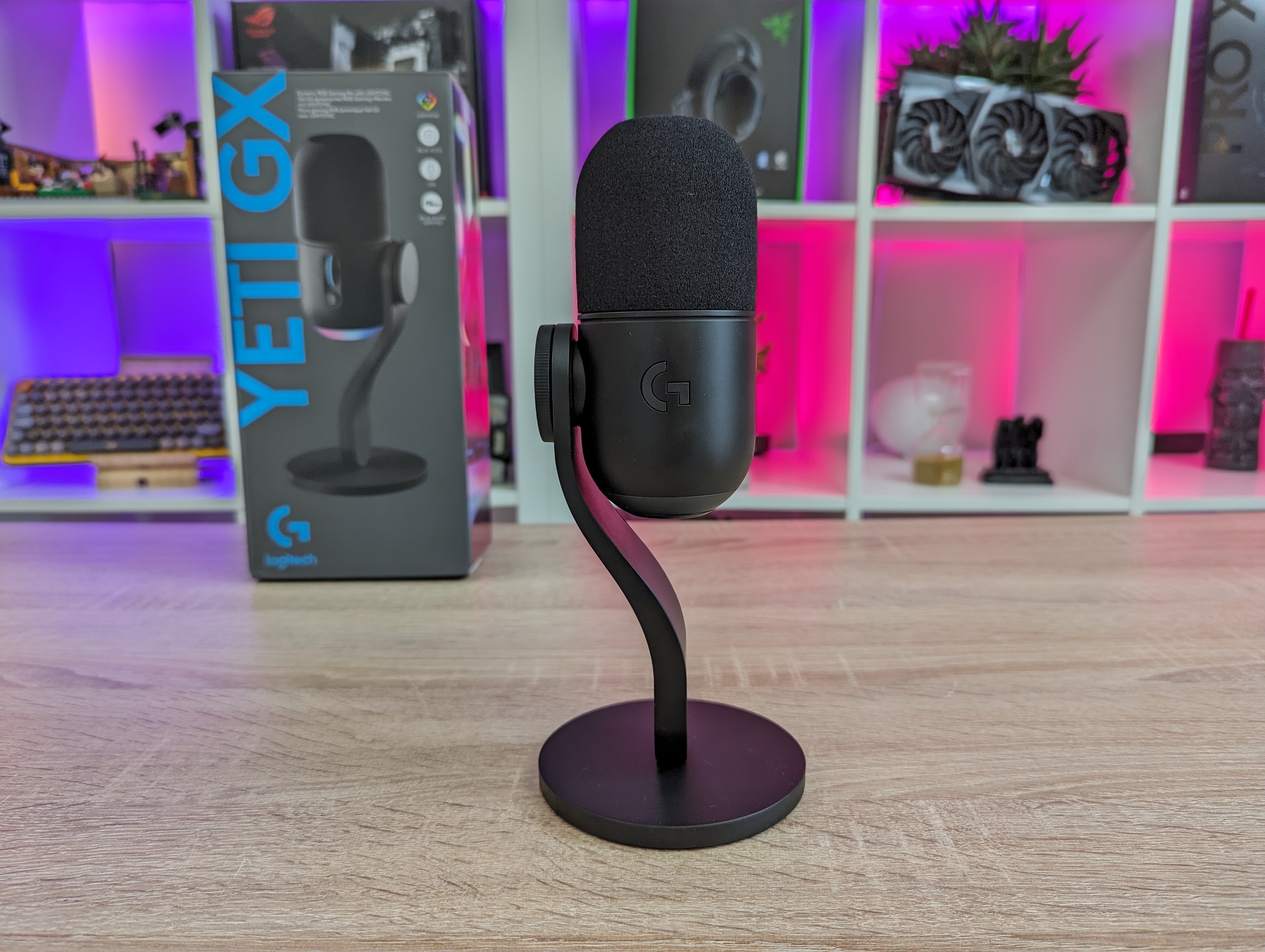
The microphone itself is arrow-shaped with a large foam cap on top. If you remove it, you can see directly into the Dynamic Supercardioid microphone, which is hidden inside.
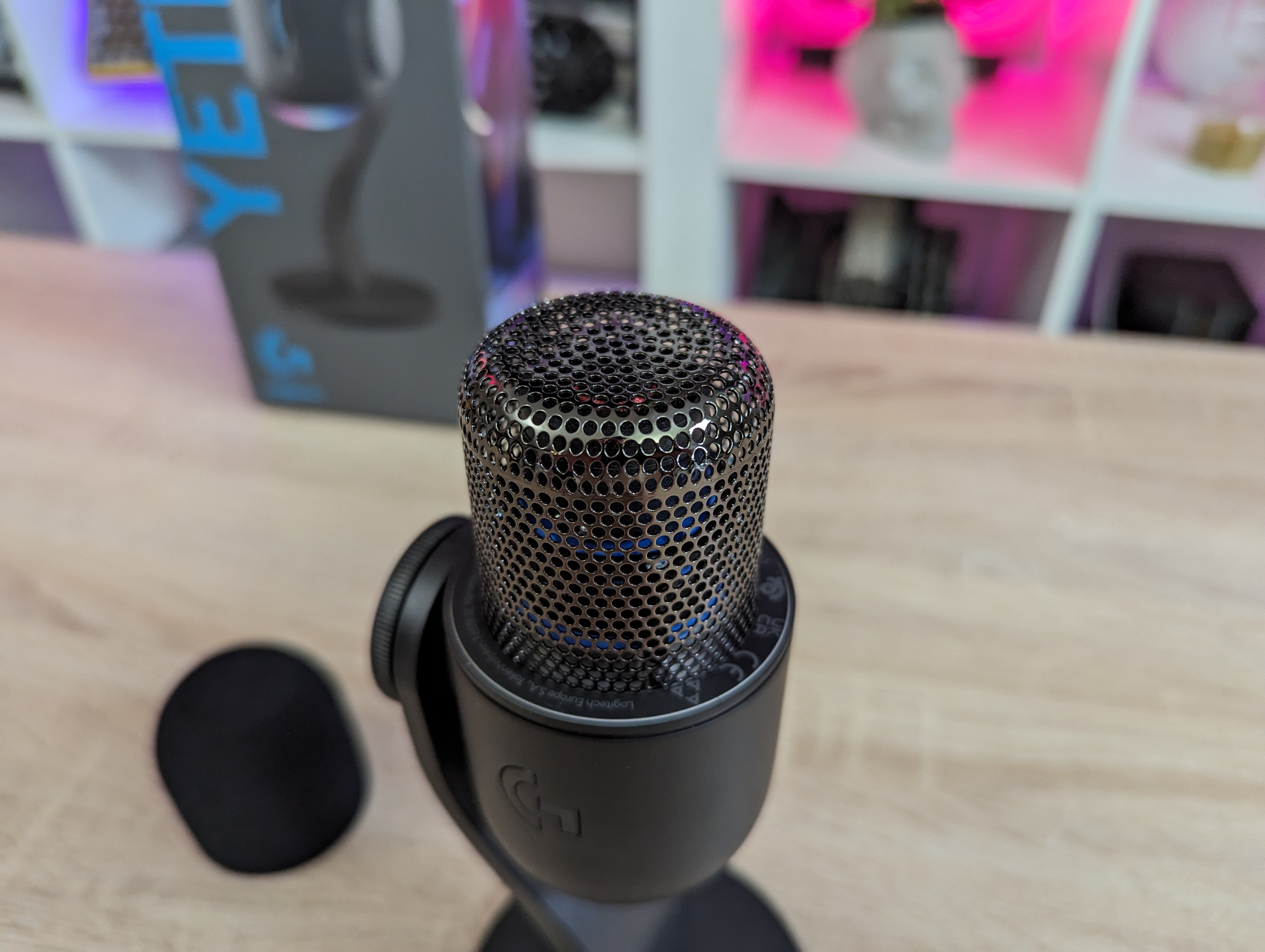
There is a Logitech G RGB logo on one side, while on the other side there is a Mute button along with a scroll wheel that can be used to adjust gain. Nicely practical to have both easily accessible.
At the bottom there is an RGB LED ring and then a USB C connector, which is used as a connection.
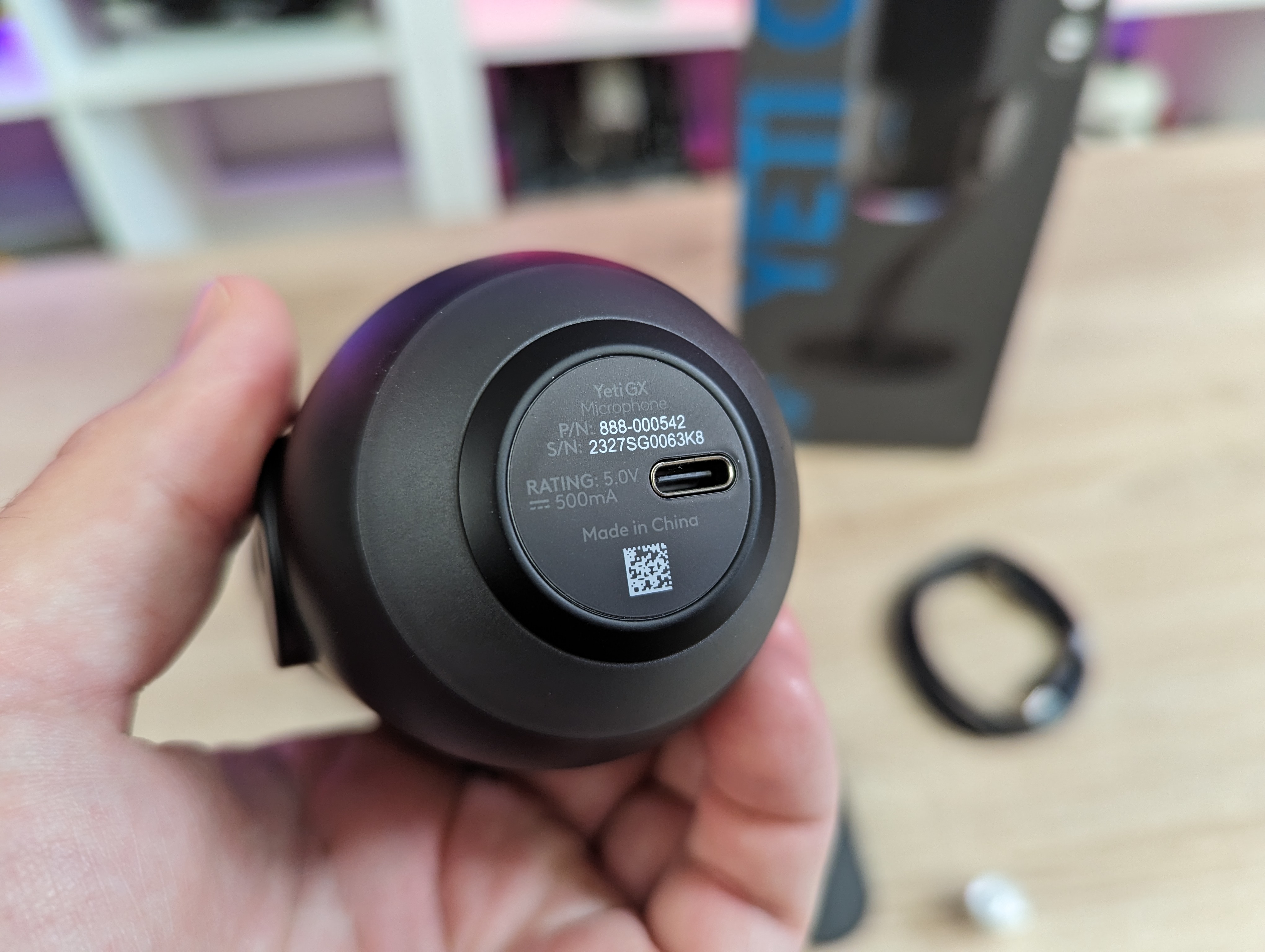
The microphone comes with a robust stand that stands firmly on the table. It is possible to tilt the microphone to get the right angle, and it can then be fastened.
It is also possible to take the microphone off the stand quite easily if you prefer to have it mounted on a microphone arm.
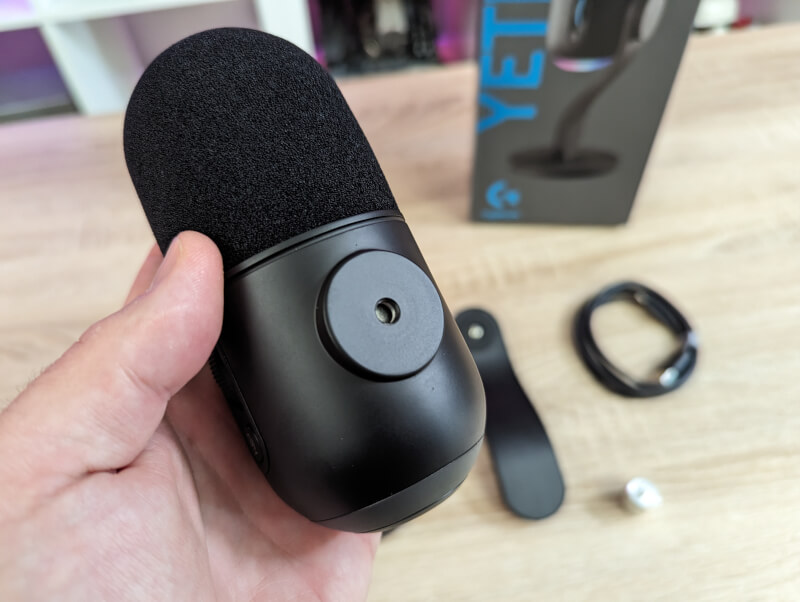
This can be done either directly in the microphone, or you can use the upper part of the stand if you want a little more flexibility.
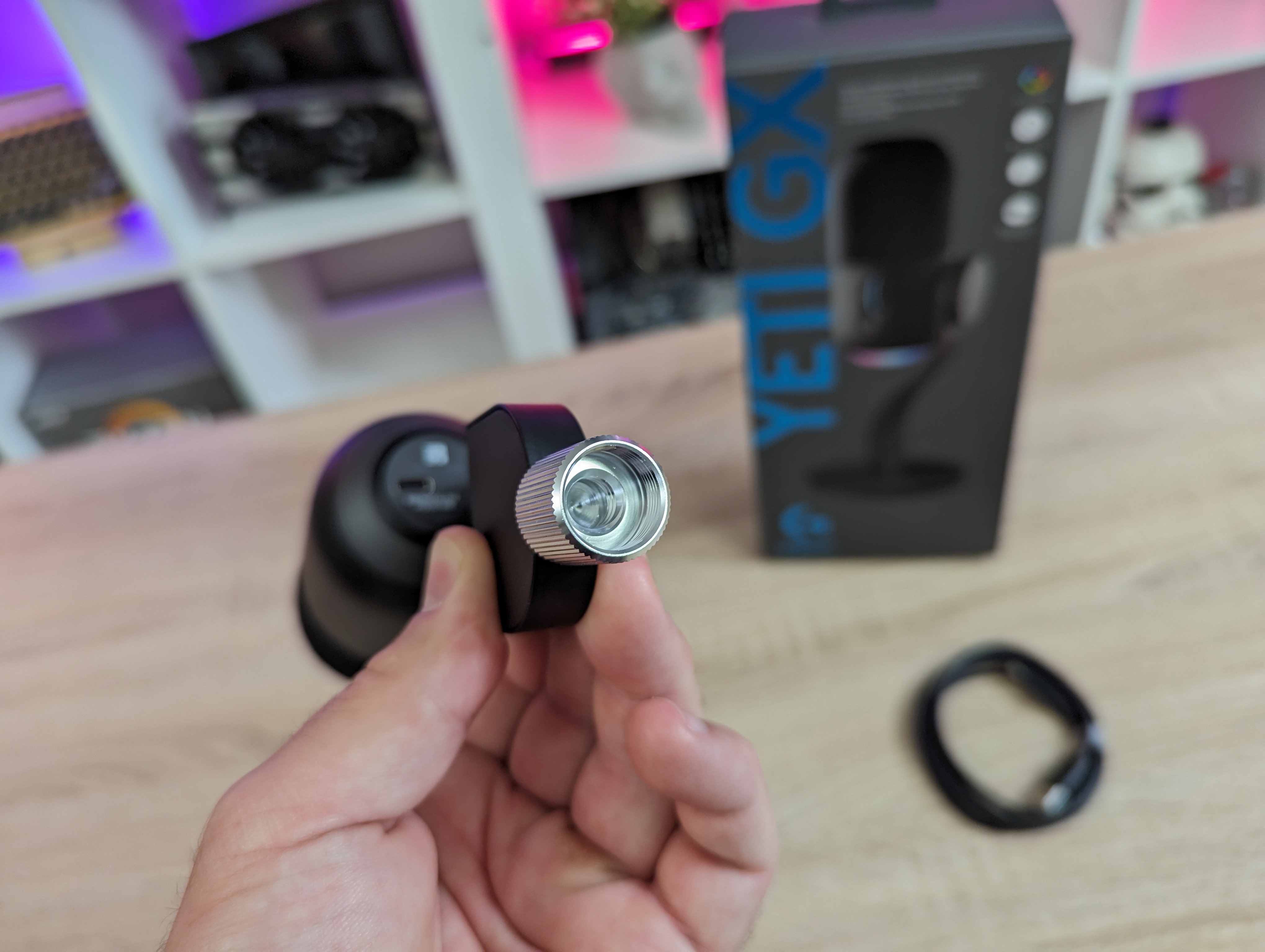
A mounting adapter is included in the box, so you are sure to be able to mount the Yeti GX to most microphone arms on the market.
Software
Controlling customization of the Yeti GX is done through Logitech's G Hub software. This is where Logitech gathers all its G products, so if you have other Logitech G products, such as a Superlight 2 mouse, they can also be found here.
Here, of course, it is possible to adjust the basic things, such as input and output volume, but that is only the tip of the iceberg.
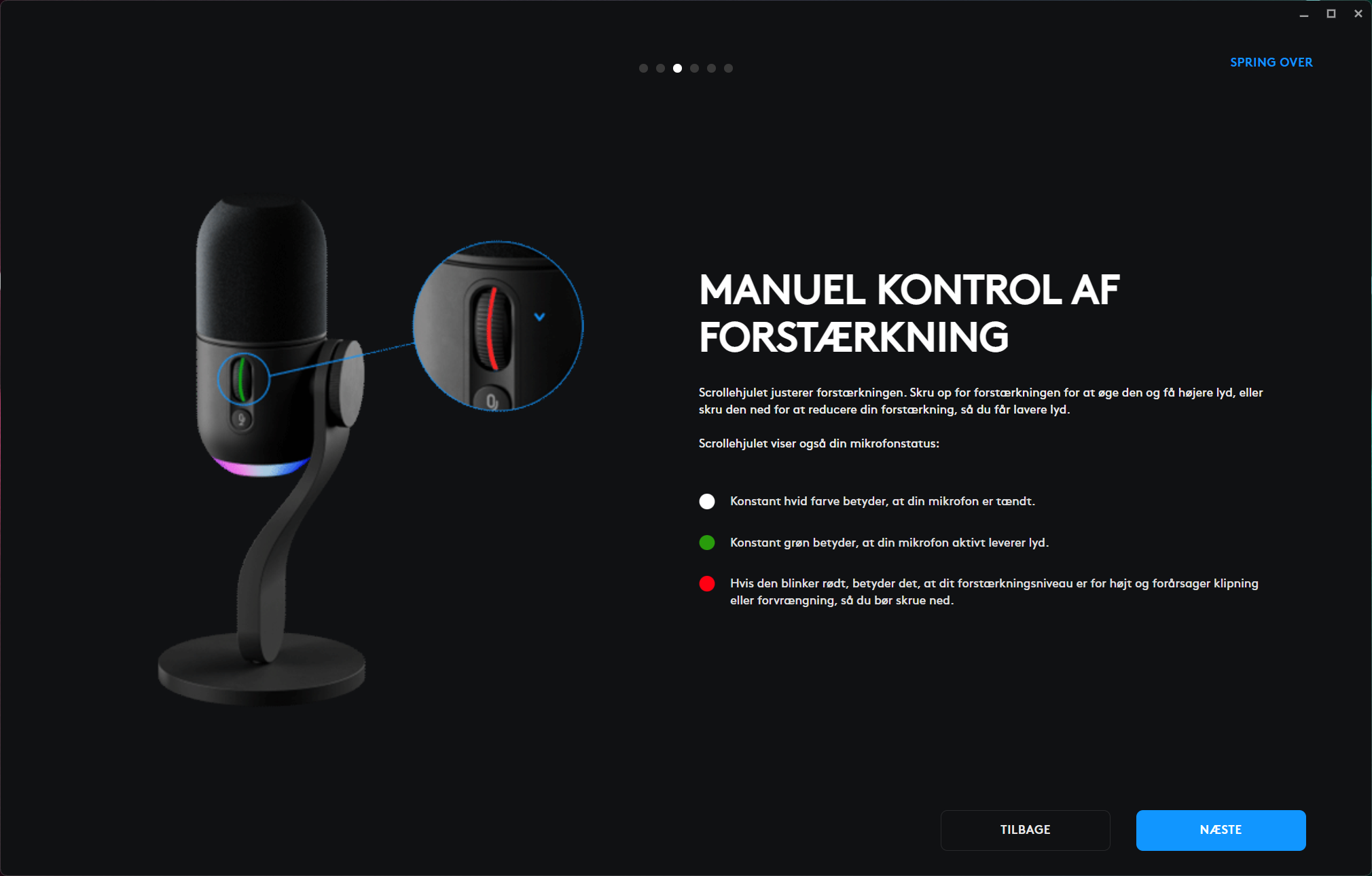
One of the features that takes up most of the software is the Blue VO!CE customizations. It is basically an EQ adjustment. There are four pre-installed settings, but of course you can also customize your own.
On top of that, as a slightly more gimmicky feature, there is also a wide range of effects that you can use on your voice. Then you can sound like a robot, an alien or a chipmunk on helium or a lot of other things, if you have that kind of desire.
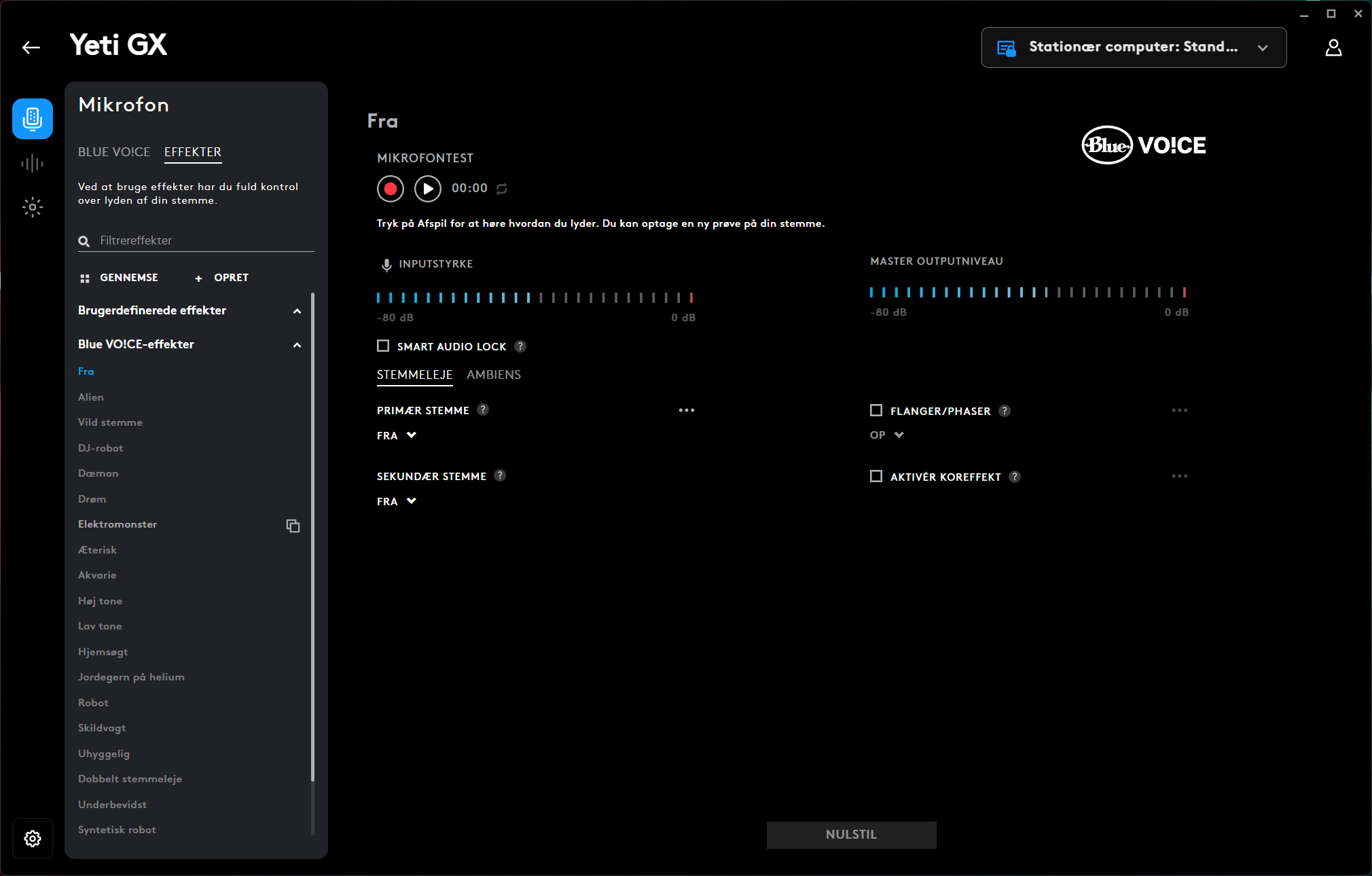
Another perhaps slightly more practical option, especially for people who stream, is the option to create a library of sounds which can subsequently be used for Macro functions. It can be both sound effects or yourself speaking a sound bite, which can then be played with a keystroke during a stream.
There is already a selection of effects in G Hub, but of course you can add as you like and do it with the many other voice effects in the Blue VO!CE section as well.
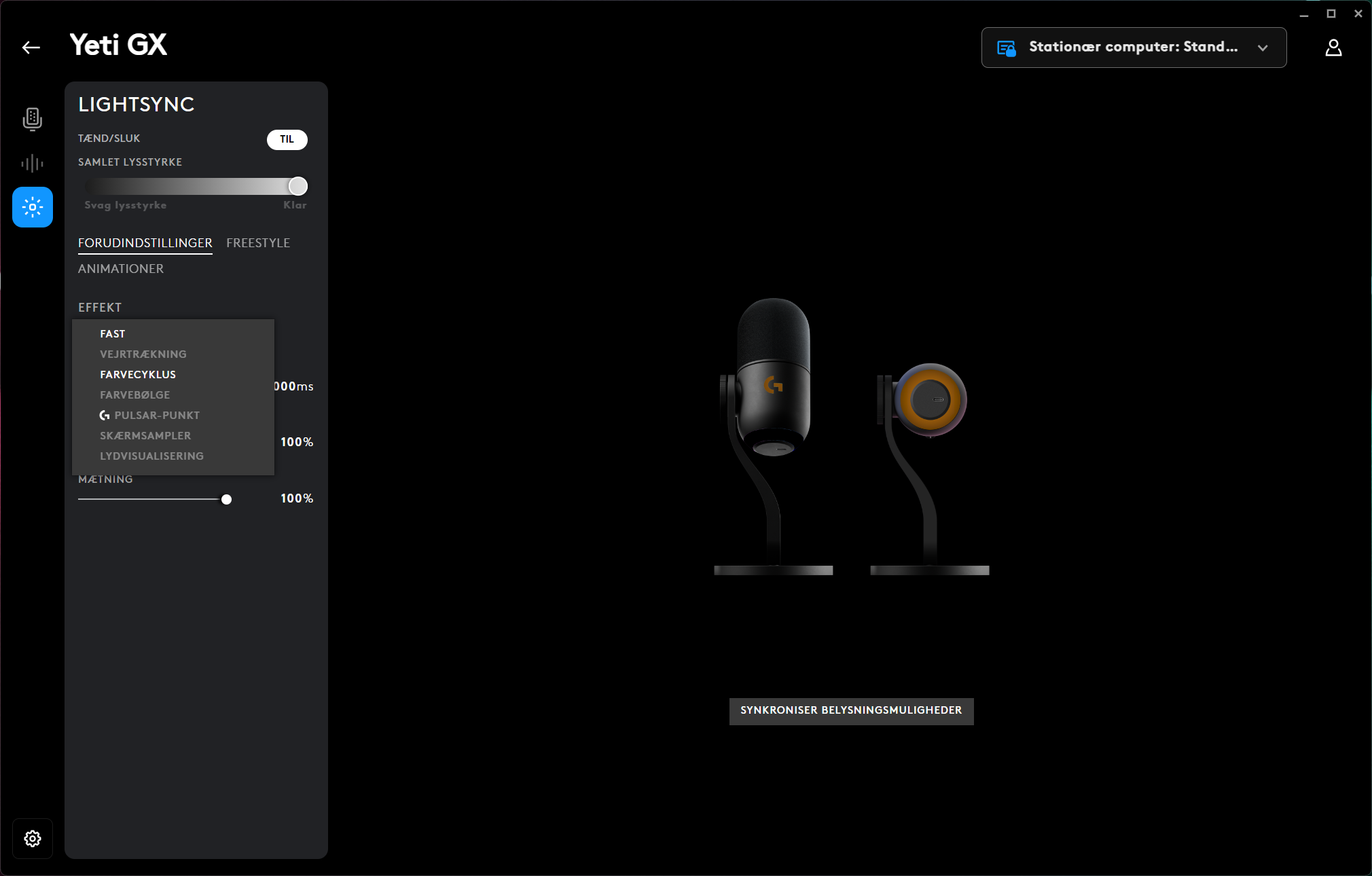
Finally, there is of course also the option to customize the RGB lighting in the Logitech G logo and the light ring at the bottom of the microphone. There are seven types you can choose from and some of them can then be customized in relation to which colors you want to use.
All settings can be tied to profiles so the system can automatically switch back and forth based on things like programs or games.
Overall, the Logitech G Suite software works well, although some of the options may not be exactly for everyone.
Testing
I have used the Logitech G Yeti GX microphone over a few days, in connection with gaming and then of course just general tests of the sound and software
Setup and use is as easy as it gets. It is a pure plug and play solution and if you can manage without the Blue VO!CE effects etc., then you can easily manage without Logitech's G Suite software and get a good result.
The sound quality of the Yeti GX in its standard version is nicely full and does not suffer from compression limitations or anything else in the sound. For voices, it is really good in my opinion, although it may not quite reach such a rich spectrum as a really good condenser microphone.
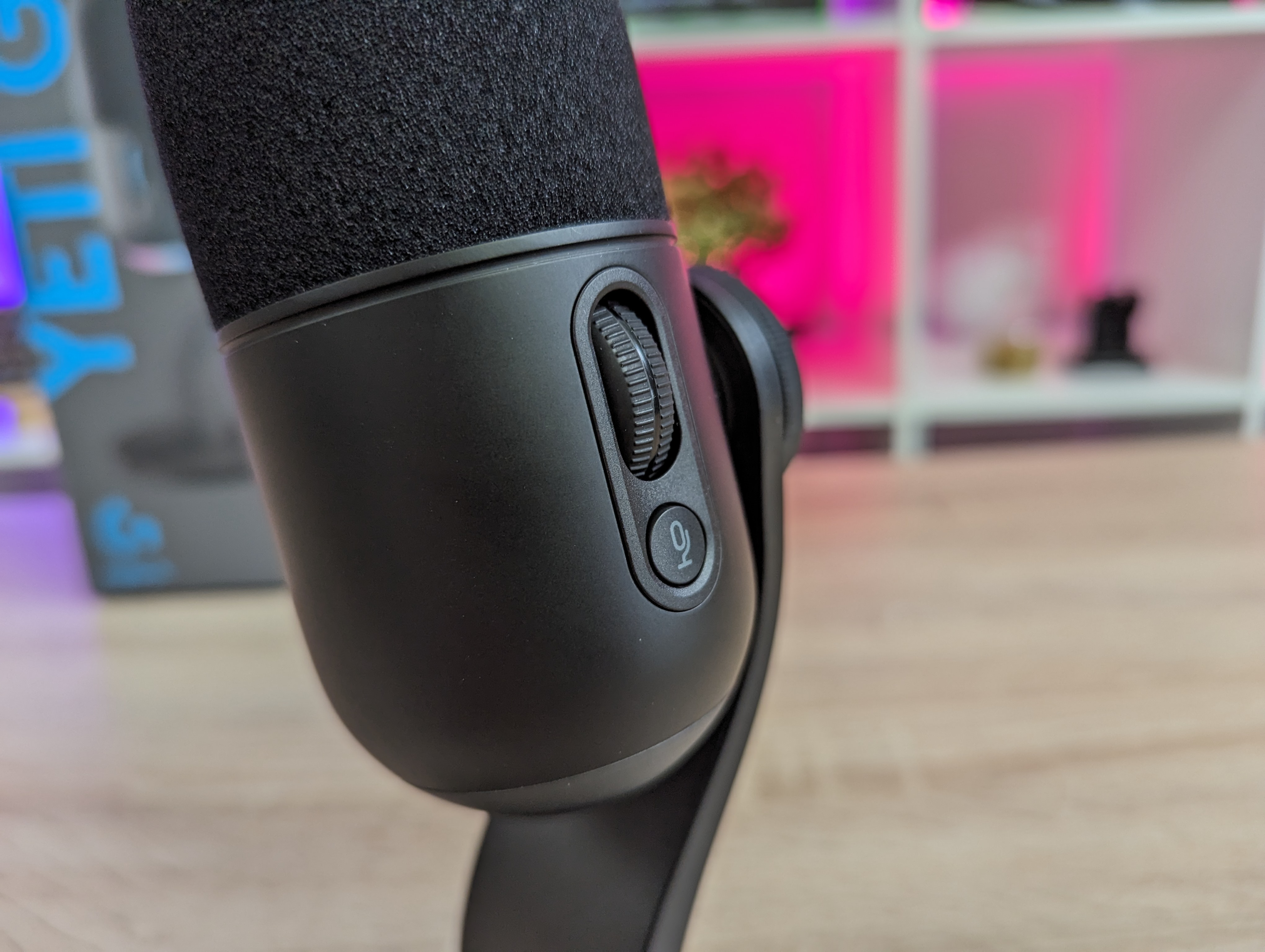
Since this is a "dynamic supercardioid" microphone, this means that you have to have it positioned so that it points straight to what you want to pick up. So you have to pay attention to how it is positioned and whether you even moves in relation to it, since you can get outside the sweet spot that it has.
However, this also means that the Yeti GX is quite good at sorting out other sounds around you. So in relation to gaming, where there may be intense mechanical keyboard activity in the background, it can be a good companion to have. It is not completely removed, but it is a weak part of the background.
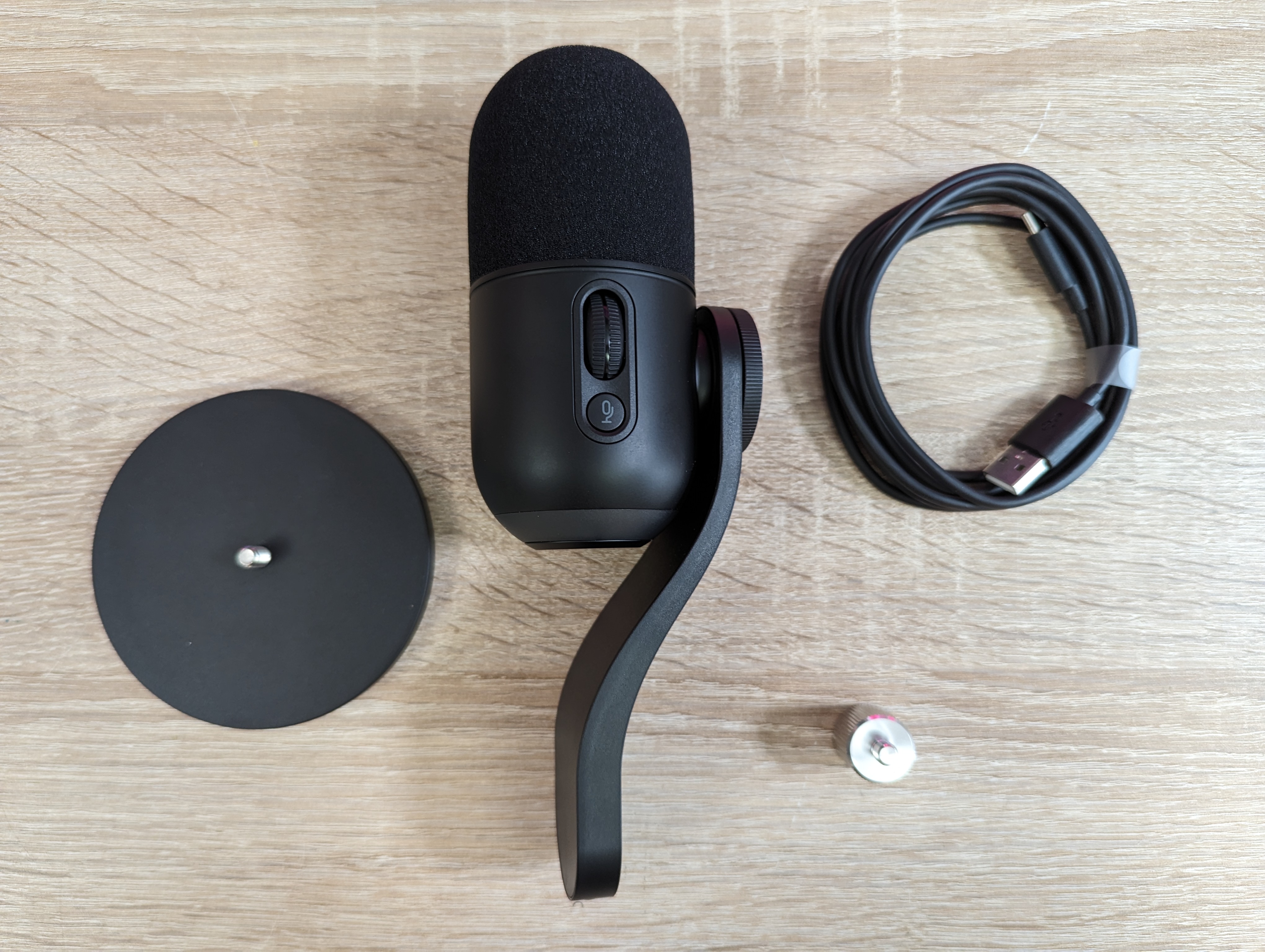
Yeti GX is isolated against shocks, etc., as the microphone itself is made in a decoupled setup. So there is an internal shock mount that prevents, for example, bumps or blows to the table from propagating through the stand.
I did a sound test of the Logitech Yeti GX without using software settings or anything else. It's just via Windows 10 and the microphone's default settings.
Listen to the sound test here.
Price
Logitech Yeti GX can currently be found with an online price of just under 200$. That places it at the expensive end for the average of gaming microphones, but still quite a bit below popular high end options from e.g. Shure or Elgato.
Conclusion
After their acquisition of Blue, Logitech has drawn the knowledge that came with it into their product development. With the new microphones in the Yeti series, they have given the design a big boost, which in my book was needed.
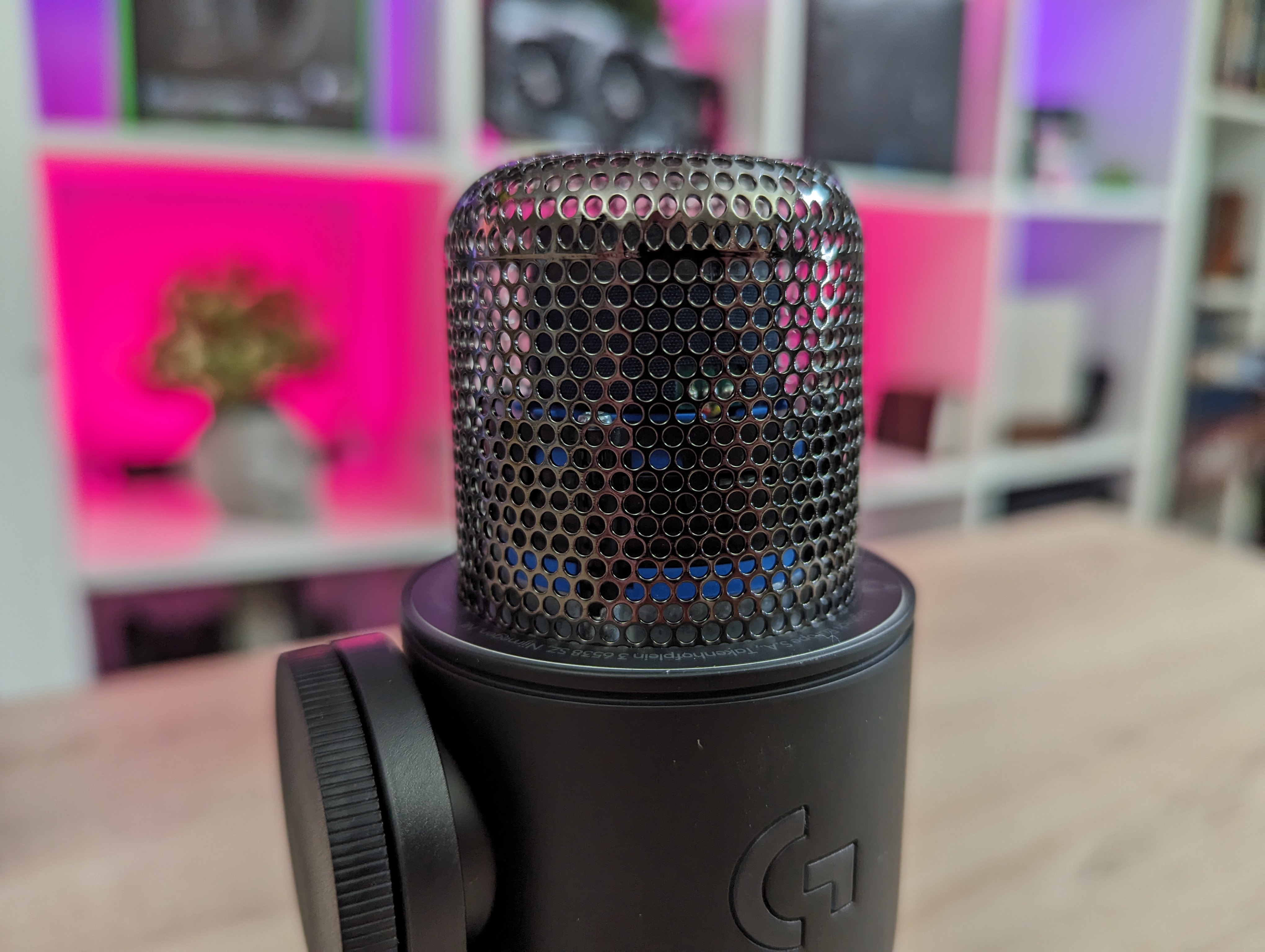
The Logitech G Yeti GX is a beautiful microphone to have standing and it is fortunately complemented by a solid sound and good software.
There is a bit of a lyre in the form of RGB, but otherwise there is not a lot of other things to deal with.
A large part of Blue VO!CE with effects etc. is perhaps for many a little too much of a gimmick, but for those of us it is fortunately easy to skip completely.
The price is on the slightly expensive end, but you end up with a beautiful and good-sounding microphone that captures your voice well and keeps most other things in the background.
We end up with a final score of 8, for a solid and beautiful microphone which is perhaps a bit on the expensive side.
Pros:
- Beautiful design
- Easy connection and operation
- Solid sound
- Easy and accessible software
Cons:
- The price

Latest speaker
-
03 Decspeaker
-
19 Augspeaker
Ultimate Ears Everboom
-
29 Junspeaker
Anker Soundcore 2
-
03 Junspeaker
Tribit StormBox Flow
-
14 Marspeaker
Bang & Olufsen launches Beoconnect Core
-
04 Marspeaker
New Razer Seiren V3 microphones
-
21 Febspeaker
Bang & Olufsen Emerge
-
01 Novspeaker
SteelSeries Alias
Most read speaker
Latest speaker
-
03 Decspeaker
Creative Sound Blaster GS5
-
19 Augspeaker
Ultimate Ears Everboom
-
29 Junspeaker
Anker Soundcore 2
-
03 Junspeaker
Tribit StormBox Flow
-
14 Marspeaker
Bang & Olufsen launches Beoconnect Core
-
04 Marspeaker
New Razer Seiren V3 microphones
-
21 Febspeaker
Bang & Olufsen Emerge
-
01 Novspeaker
SteelSeries Alias






